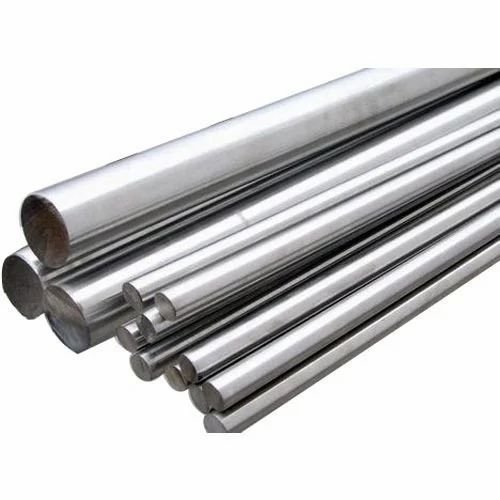A2 tool steel is a versatile and widely used type of steel in tool-making industries, celebrated for its balance of toughness, wear resistance, and moderate machinability. One common question from those in manufacturing, engineering, or machining is whether A2 tool steel is magnetic. While the answer is a straightforward “yes,” understanding why A2 tool steel is magnetic and exploring its other properties can offer valuable insights into its uses, advantages, and limitations. Knowledge of these characteristics, especially when sourcing material from reliable tool steel suppliers, is essential for selecting the correct steel for specific applications.
What is A2 Tool Steel?
A2 tool steel is part of the air-hardening tool steel category, which offers a distinct advantage in terms of dimensional stability after heat treatment. Composed primarily of carbon and chromium, A2 tool steel is known for being highly resistant to wear and moderately tough. Tool steel suppliers often recommend A2 for tools that require a good balance of hardness and resilience without significant distortion after hardening.
The primary elements in A2 tool steel include:
– Carbon: Ranges between 0.95% and 1.05%, providing hardness and wear resistance.
– Chromium: Around 5%, contributing to corrosion resistance and hardness.
– Molybdenum: Adds strength and wear resistance, especially at elevated temperatures.
– Vanadium: Enhances grain structure, which improves toughness and wear resistance.
This alloy composition makes A2 tool steel highly magnetic, as it has a structure predominantly made up of iron.
Why is A2 Tool Steel Magnetic?
A2 tool steel is magnetic because it is an iron-based alloy. The ferromagnetic properties in tool steel derive from its iron content, which aligns magnetic domains under external magnetic fields. In its annealed state, A2 tool steel is fully magnetic, and it retains its magnetism even after heat treatment. However, the level of magnetism may vary slightly due to changes in the alloy’s microstructure after processing. Tool steel suppliers often provide detailed specifications on magnetic properties to help users understand its behavior in applications where magnetism is a factor.
Properties of A2 Tool Steel: Key Characteristics Beyond Magnetism
In addition to its magnetic nature, A2 tool steel has a number of properties that make it valuable for various industrial applications:
– Wear Resistance: A2 tool steel is particularly wear-resistant due to its carbon and chromium content, making it suitable for tools that encounter high friction.
– Toughness: Compared to high-carbon steels, A2 offers moderate toughness, which means it can absorb impact without chipping or cracking easily.
– Dimensional Stability: One of the most prized properties of A2 is its minimal distortion after heat treatment. Air-hardening steels like A2 undergo hardening without the drastic quenching required by other steels, maintaining closer tolerances.
For toolmakers and engineers, sourcing A2 tool steel from reputable tool steel suppliers ensures access to high-quality material that delivers these properties consistently across applications.
Applications of A2 Tool Steel: Where Magnetism Matters
A2 tool steel’s magnetism can be both an asset and a consideration depending on the application. Its use spans various industries, including automotive, aerospace, and manufacturing, where magnetic properties may play a role in performance.
– Die Cutting and Stamping: Due to its wear resistance and moderate toughness, A2 tool steel is commonly used in dies for cutting, stamping, and forming. The magnetic properties are not usually a concern here, but knowing A2’s magnetic nature is useful for handling and aligning die components during assembly.
– Forming Tools: The moderate toughness and stability make A2 suitable for forming tools, punches, and other applications where precision is crucial. In such cases, the magnetic property aids in machine handling and fixture alignment.
– Industrial Blades and Shear Blades: A2 tool steel is also popular for industrial blades, including paper cutters, wood chippers, and plastic granulators. In magnetic holding devices, A2’s magnetic nature enables secure positioning, which is advantageous for maintaining blade stability during operation.
By choosing high-quality A2 from trusted tool steel suppliers, manufacturers can maximize the performance and lifespan of tools in these demanding applications.
Heat Treatment of A2 Tool Steel and Its Effects on Magnetism
The heat treatment process for A2 tool steel involves preheating, austenitizing, and air cooling, followed by tempering. This process significantly enhances the steel’s hardness and wear resistance. Unlike oil-hardening steels, A2 hardens through air cooling, which minimizes dimensional changes and ensures consistent mechanical properties. However, the heat treatment process can impact its magnetic characteristics slightly due to changes in the steel’s microstructure, though A2 remains magnetic throughout.
– Austenitizing: Heating A2 tool steel to its critical temperature (around 950–980°C) allows the carbon and alloying elements to dissolve into the iron matrix.
– Tempering: After hardening, A2 is tempered at around 150–500°C depending on the required toughness. This process increases toughness while retaining hardness and magnetic properties.
Experienced tool steel suppliers often offer guidance on the appropriate heat treatment specifications to ensure that A2 tool steel performs optimally for its intended application.
Magnetic Considerations When Selecting Tool Steel
When selecting A2 tool steel, understanding its magnetic properties is beneficial, especially for applications where magnetic interference could impact performance. For example, in precision electronic devices or environments where electromagnetic interference (EMI) is a concern, A2’s magnetic properties could be a limiting factor. However, for most mechanical applications, A2’s magnetism is either neutral or beneficial.
Some alternatives to A2 with less pronounced magnetic properties include high-speed steel or carbide options, which have lower iron content. Tool steel suppliers can provide customized advice on which material is most suitable based on application needs.
Sourcing High-Quality A2 Tool Steel from Reputable Tool Steel Suppliers
Choosing reliable tool steel suppliers is essential for ensuring consistent quality in A2 tool steel. Reputable suppliers maintain strict quality control measures, testing each batch for chemical composition, hardness, toughness, and other key properties. This consistency is crucial when using A2 in applications that require precise magnetic and mechanical characteristics.
Some attributes of high-quality A2 tool steel include:
– Precise Chemical Composition: Ensures desired magnetic and mechanical properties.
– Consistent Hardness: Allows for uniform performance across applications.
– Dimensional Stability: Minimizes changes during machining and heat treatment.
Tool steel suppliers with in-depth industry knowledge can also provide support in selecting the correct grade and providing heat treatment recommendations based on specific application requirements.
Comparing A2 Tool Steel with Other Tool Steels in Terms of Magnetism
While A2 is magnetic, other tool steels vary in their magnetic properties. Comparing A2 with other tool steels can offer insight into which material is ideal for a given application:
– O1 Tool Steel: Oil-hardening and highly magnetic, but with higher distortion after hardening compared to A2.
– D2 Tool Steel: Also magnetic and known for excellent wear resistance but lacks the toughness of A2, making it less suitable for high-impact applications.
– S7 Tool Steel: Known for extreme toughness and less magnetic than A2 but is not as wear-resistant, making it suitable for impact tools rather than cutting applications.
Understanding these distinctions helps manufacturers select the right tool steel grade, especially when magnetic properties and dimensional stability are essential.
Conclusion: The Value of A2 Tool Steel’s Magnetic Properties
In summary, A2 tool steel is indeed magnetic due to its iron content and alloy composition. This property, combined with its exceptional wear resistance, moderate toughness, and dimensional stability, makes A2 tool steel highly valuable in tool-making applications. Whether used in die-cutting tools, forming tools, or industrial blades, A2’s magnetic nature can benefit alignment, holding, and operational stability in magnetic applications.



